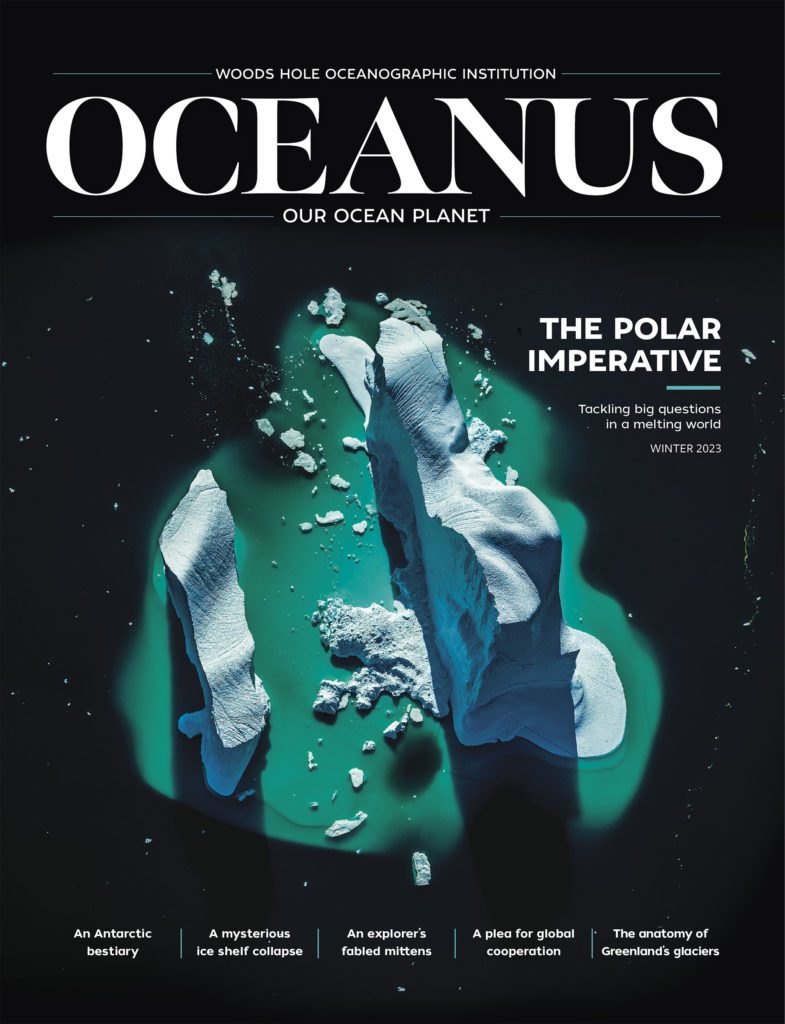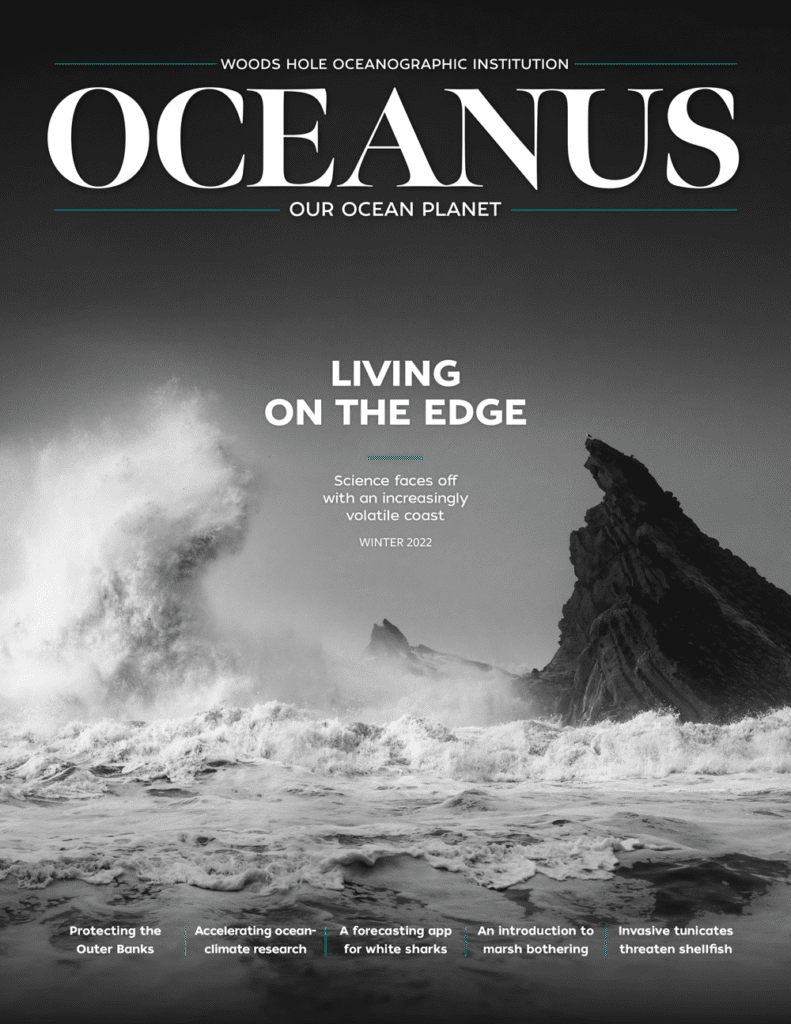Climate Change
How a colossal block of ice became an obsession
In a record-breaking year of weather, signs of a changed world
However it is measured, these days — in a world that has warmed 1.1°C over preindustrial times, thanks to the burning of fossil fuels — the symptoms of our warmed and warming planet became impossible to ignore in the last year, as extreme events ramped up in frequency and severity across the globe.
Mayor Bill de Blasio Announces Finalists to Anchor City’s Climate Solutions Center on Governors Island
Mayor Bill de Blasio and The Trust for Governors Island (the Trust) today announced the next steps in the City of New York’s initiative to establish a global Center for Climate Solutions on Governors Island.
Ambergris: What fragrant whale excretions tell us about ancient oceans
Ambergris also contains historical information about the oceans, especially the marine species foraged by the whales that produce it. It could even give insights into how these animals might respond to the challenges they face as a result of climate change.
Arctic researchers want to state their case before international climate change policy makers
With the Arctic region warming at three times the global rate, profound and rapid change is evident everywhere from the Greenland ice sheet to the ocean ecosystem and the permafrost underlying much of the landmass.
Columbia to Launch $25 Million AI-based Climate Modeling Center
To bring greater precision to climate modeling and encourage societies to prepare for the inevitable disruptions ahead, the National Science Foundation (NSF) has selected Columbia to lead a climate modeling center called Learning the Earth with Artificial Intelligence and Physics (LEAP). In collaboration with the National Center for Atmospheric Research (NCAR) and NASA’s Goddard Institute for Space Studies (GISS), the center will develop the next generation of data-driven physics-based climate models.
Rise and fall of water blisters offers glimpse beneath Greenland’s thick ice sheet
The findings could shed light on how climate change will affect Greenland’s vast frozen interior as the planet warms and surface melting increase.
Scientists Evaluate the Evidence for an Intensifying Indian Ocean Water Cycle
“Scientific communities need to come together to have discussions about what we can tell from our data, how we can compare apples and oranges, and how we can bring all this information together to have a better understanding of the entire Indian Ocean system,” Ummenhofer says.
Our future is in our hands
It is “unequivocal” that human influence has warmed the planet and that widespread, rapid changes have already occurred in every region of the globe as a result. The scale and rate of changes are “unprecedented” in relation to the past hundreds to thousands of years. And there are more changes on the way.
How an underwater robot could help reveal mysteries of the deep
Enter Mesobot, a state-of-the-art aquatic explorer designed to help unravel some of those unknowns, and improve our existing knowledge.
Melting ice imperils 98% of Emperor penguin colonies by 2100
WASHINGTON (AP) — With climate change threatening the sea ice habitat of Emperor penguins, the U.S. Fish and Wildlife Service on Tuesday announced a proposal to list the species as threatened under the Endangered Species Act. “The lifecycle of Emperor penguins is tied to having stable sea ice, which they need to breed, to feed and to molt,” said Stephanie Jenouvrier, a penguin ecologist at the Woods Hole Oceanographic Institution.
What Happens to Marine Life When There Isn’t Enough Oxygen?
In September of 2017, Woods Hole Oceanographic Institution postdoctoral scholar Maggie Johnson was conducting an experiment with a colleague in Bocas del Toro off the Caribbean coast of Panama. After sitting on a quiet, warm open ocean, they snorkeled down to find a peculiar layer of murky, foul-smelling water about 10 feet below the surface, with brittle stars and sea urchins, which are usually in hiding, perching on the tops of coral. This unique observation prompted a collaborative study explained in a new paper published on July 26, 2021, in Nature Communications analyzing what this foggy water layer is caused by, and the impact it has on life at the bottom of the seafloor.
Impact of Hypoxic Ocean Waters on Marine Life
Investigators suggest that loss of oxygen in the global ocean is accelerating due to climate change and excess nutrients, but how sudden deoxygenation events affect tropical marine ecosystems is poorly understood.
Baker Administration Pushes Legislature For Climate Resiliency Funds
Murray said buoys, research ships and other coastal monitoring systems would be critical to predicting weather patterns and preparing for impacts on food supplies and local economies built around fishing.
Review evaluates the evidence for an intensifying Indian Ocean water cycle
The paper brings together various scientific expertise, tools, and data sources to address key questions regarding climate change in the Indian Ocean, says Ummenhofer, associate scientist in the Physical Oceanography Department at the Woods Hole Oceanographic Institution (WHOI).
Review evaluates the evidence for an intensifying Indian Ocean water cycle
The paper brings together various scientific expertise, tools, and data sources to address key questions regarding climate change in the Indian Ocean, says Ummenhofer, associate scientist in the Physical Oceanography Department at the Woods Hole Oceanographic Institution (WHOI).
To Understand How Warming is Driving Harmful Algal Blooms, Look to Regional Patterns, Not Global Trends
Accounts of harmful algal growths have increased over time. So has monitoring, however, making it difficult to tell whether the rise in observations is simply because there is greater awareness of their occurence or if it truly represents a growing ocean threat.
Study finds six degrees celsius cooling on land during the last ice age
The study bolsters the method of analyzing noble gases to reconstruct paleo temperatures and provides more confidence in climate models, according to the authors.
Consortium For Combatting Global Climate Change
Designed to act as an engine for continuous innovation and powered by some of the world’s leading minds and businesses, the OCIA consortium is open to participation by a wide range of leading organisations across business, academia and non-profits that recognise the inextricable links between ocean and climate and wish to have a positive impact on the global climate crisis.
ADI teams on ocean innovation accelerator
The Ocean and Climate Innovation Accelerator (OCIA) consortium is funded with $3m over three years from ADI to develop new technologies to monitor climate change.
WHOI partnership means $3 million to investigate how climate change affects oceans
Funded by a $3 million multiyear grant from Analog Devices Inc. of Wilmington, the program will support research investigating climate change impacts on the ocean.
How to Talk to Kids About Climate Change
Luckily, there are a lot of experts who are parents themselves who can help. Here are some of their tips.
Cape Cod Climate Research Station Abandoned Because It’s About to Fall Into the Sea
Warmer World Needs More Protected Habitat
With climate change soon to be the main threat to biodiversity, protected habitat will be a higher priority than ever to give wildlife a chance.




